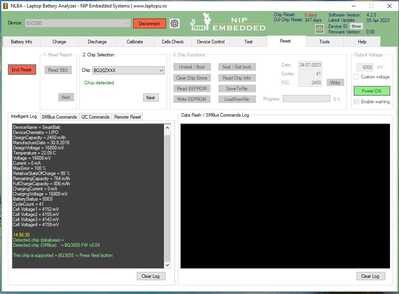The Autel XStar Premium drone, while no longer in production, remains a valuable tool for many aerial photographers and videographers. However, like all battery-powered devices, the Autel XStar drone’s battery life is finite. When the original battery begins to fail, replacing the internal LiPo cells can extend the drone’s lifespan. This process, however, requires understanding how to work with the battery’s Battery Management System (BMS), specifically the Texas Instruments BQ3055 chip. This article explores the challenges and solutions associated with unsealing and modifying an Autel Xstar Drone Battery.
Understanding the Autel XStar Premium Battery and the BQ3055 Chip
The Autel XStar Premium battery utilizes a TI BQ3055 BMS chip to manage and protect its LiPo cells. This chip controls charging, discharging, and cell balancing, ensuring safe and efficient operation. The BQ3055 also monitors various parameters, such as voltage, current, and temperature, to prevent overcharging, over-discharging, and overheating. A key feature of the BQ3055 is its “sealed” state, which prevents unauthorized modification of critical parameters. Unsealing the chip is necessary to update these parameters after replacing the LiPo cells.
Challenges in Unsealing the BQ3055
Unsealing the BQ3055 chip in an Autel XStar battery presents several challenges. Software designed for DJI batteries, while using a similar interface (EV2300 programmer), often does not support the BQ3055 found in Autel batteries. This incompatibility stems from licensing restrictions and differences in the BMS firmware. Even with compatible hardware, incorrect procedures can permanently damage the BMS, rendering the battery unusable.
Solutions for Unsealing and Reprogramming
Successfully unsealing and reprogramming the BQ3055 requires specialized software and a deep understanding of battery management systems. While some software solutions may offer limited support for the BQ3055, finding a reliable and compatible tool is crucial. The NLBA (Laptop Battery Analyzer) software, with the appropriate license, is one such solution that has shown promising results in unsealing and modifying parameters in the BQ3055.
Once unsealed, critical parameters, such as design capacity and cell characteristics, must be accurately updated to reflect the new LiPo cells. Using incorrect values can lead to improper charging and discharging, potentially damaging the new cells and even posing a safety hazard.
Replacing LiPo Cells: Considerations and Precautions
When replacing the LiPo cells in an Autel XStar battery, it’s essential to use high-quality cells with specifications that closely match the originals. Factors to consider include cell capacity, voltage, discharge rate, and physical dimensions. Using incompatible cells can negatively impact performance and safety.
Extreme caution should be exercised when working with LiPo batteries. They are highly sensitive to physical damage and improper handling. Always disconnect the battery from the drone before starting any repair work. Wear appropriate safety gear, such as gloves and eye protection, and work in a well-ventilated area.
Conclusion
Replacing the LiPo cells in an Autel XStar drone battery equipped with a BQ3055 BMS can be a complex undertaking. However, with the right tools, knowledge, and precautions, it’s possible to extend the life of your valuable drone. Remember to prioritize safety and carefully research compatible software and replacement cells before attempting this procedure. Understanding the intricacies of the BQ3055 chip is paramount to success.

